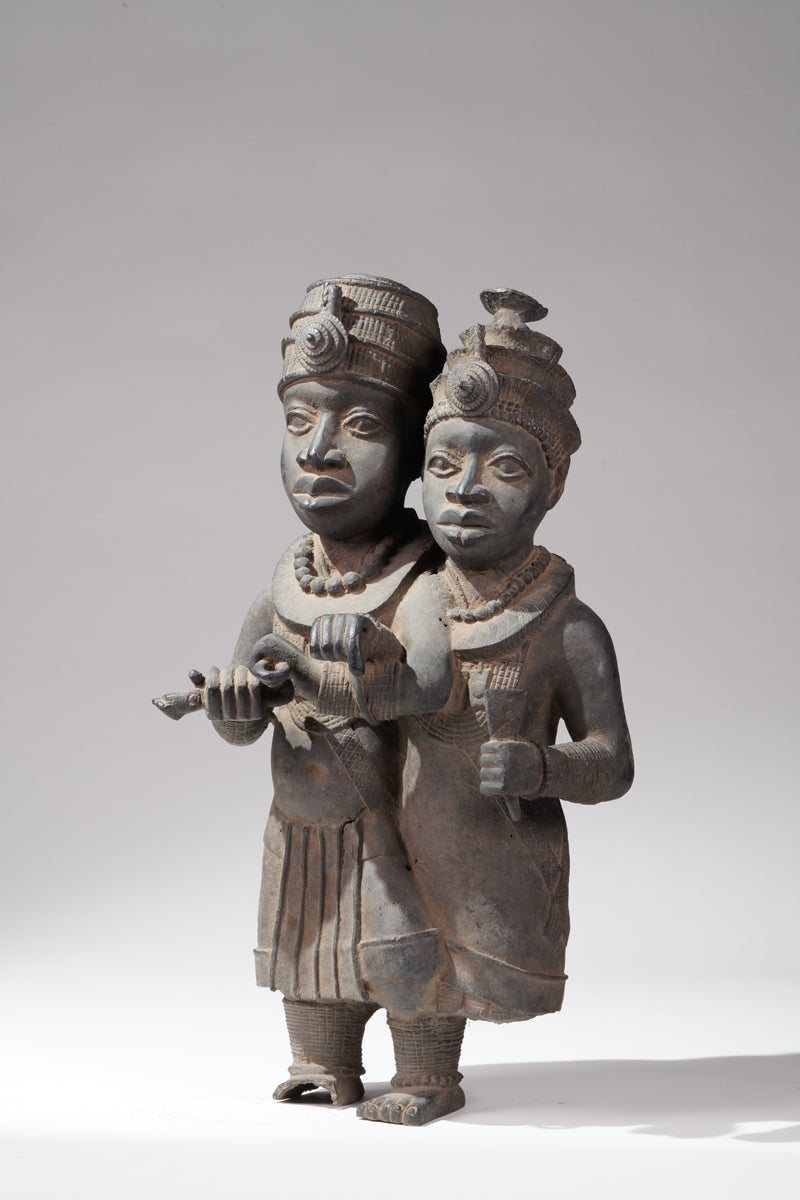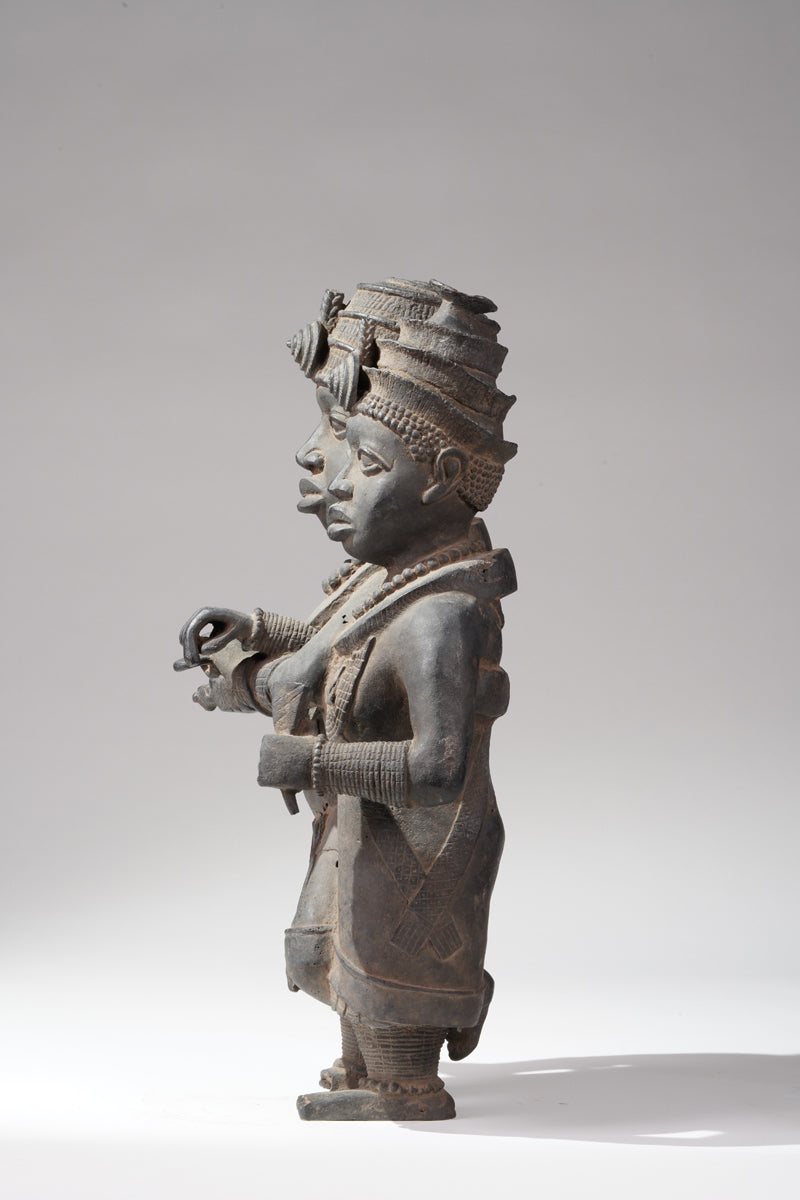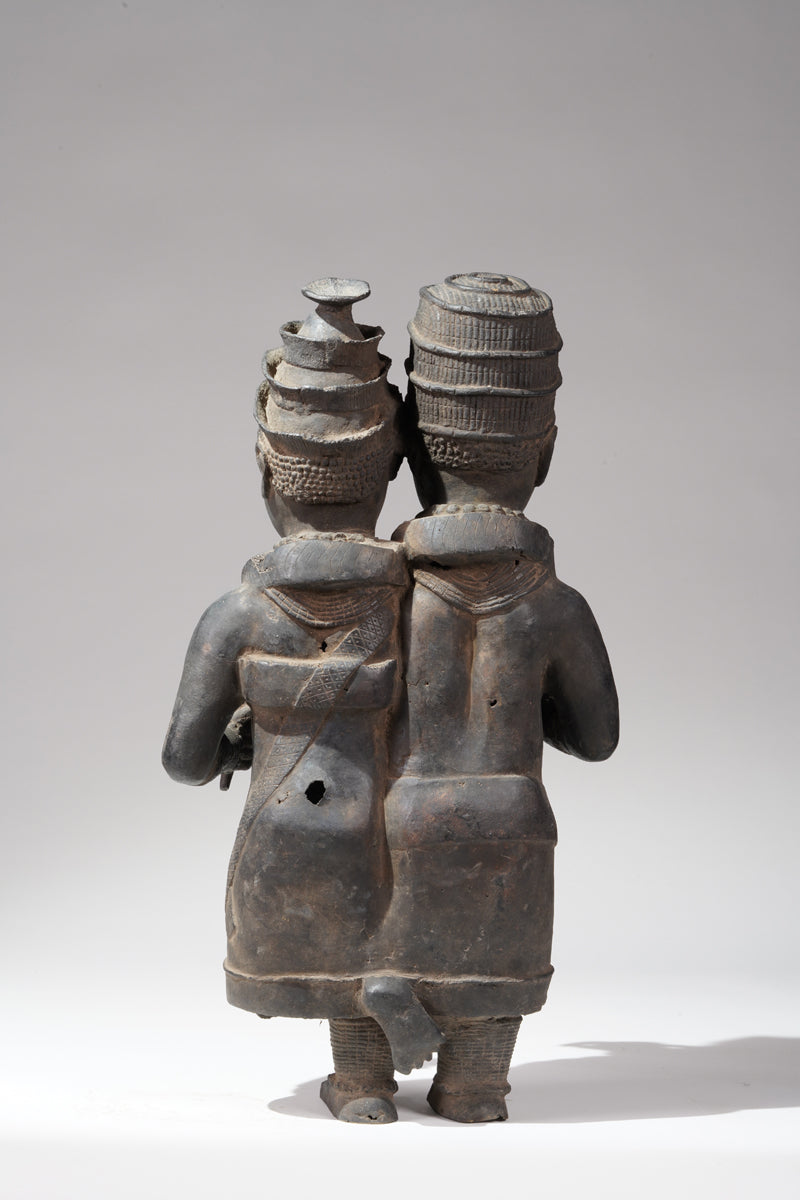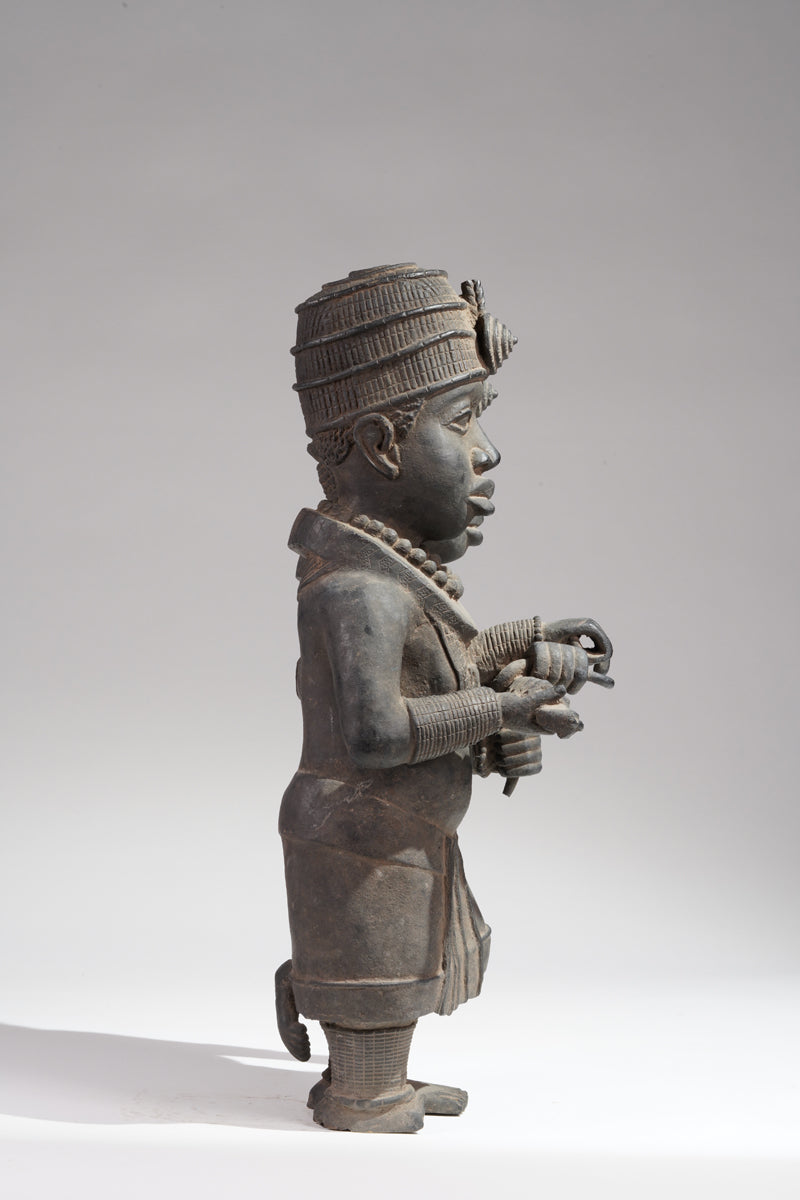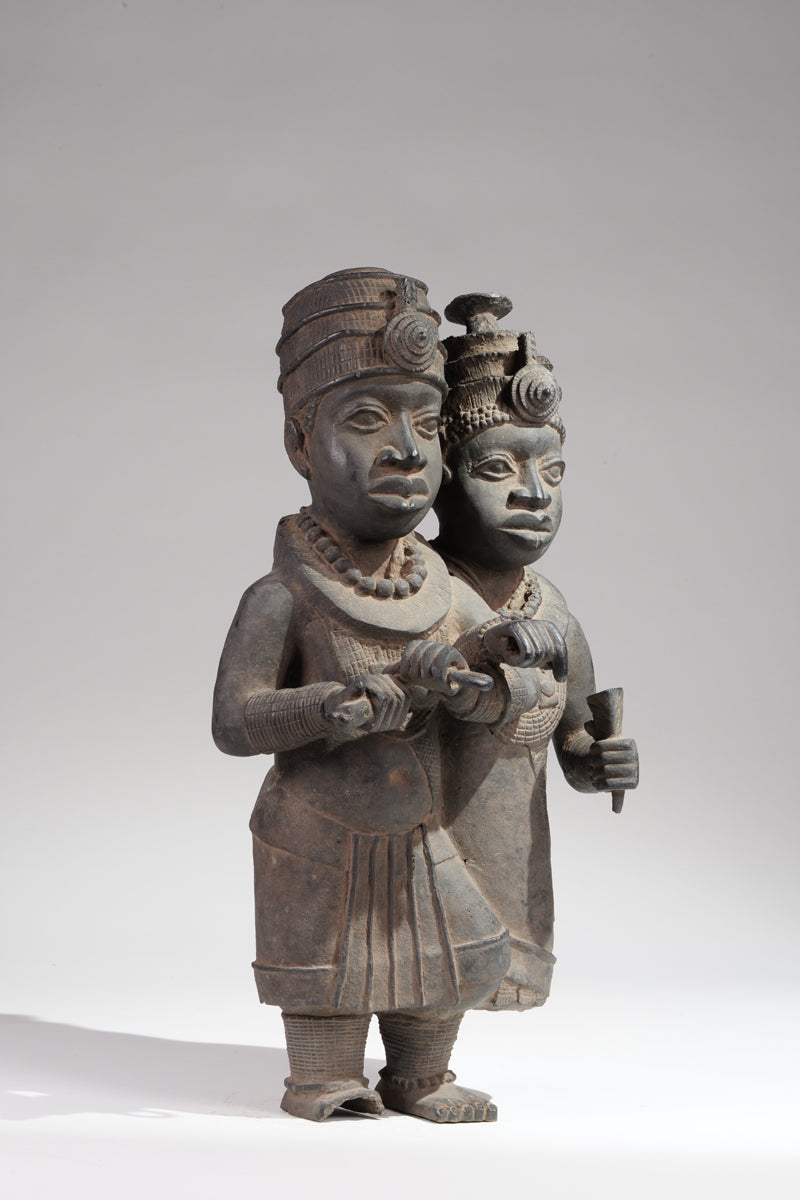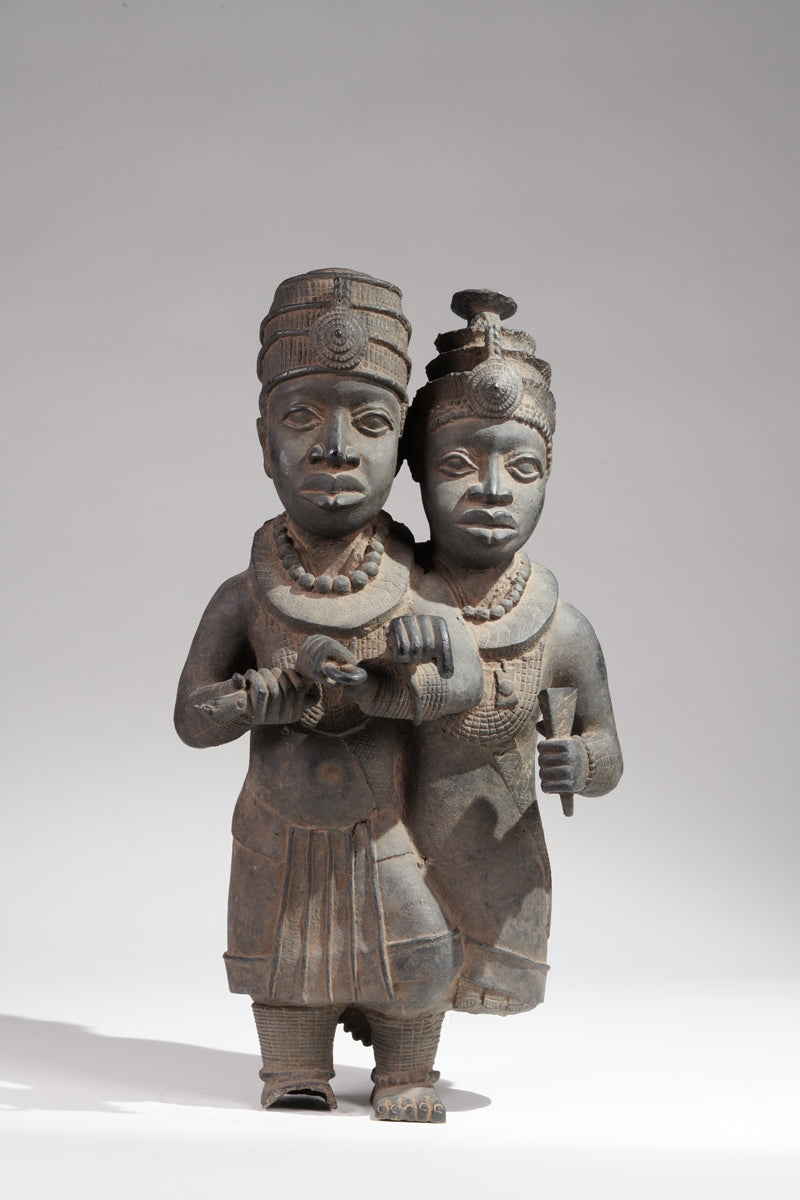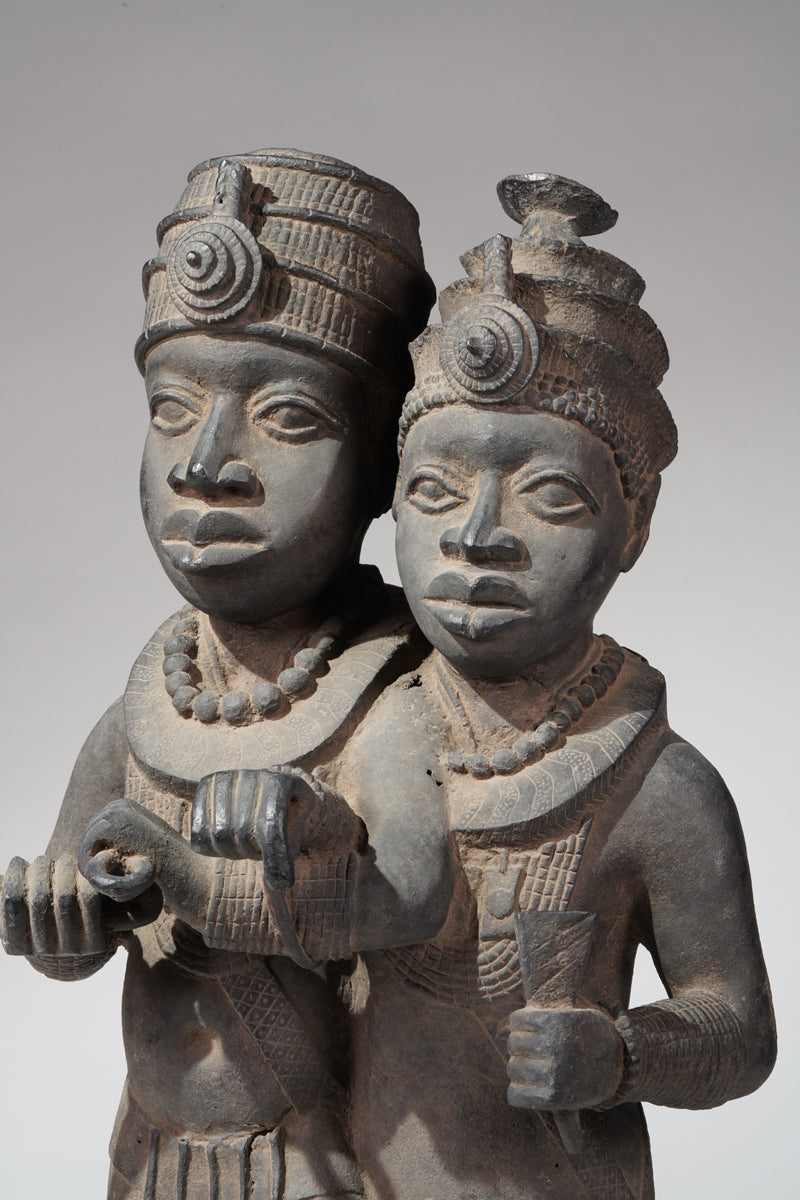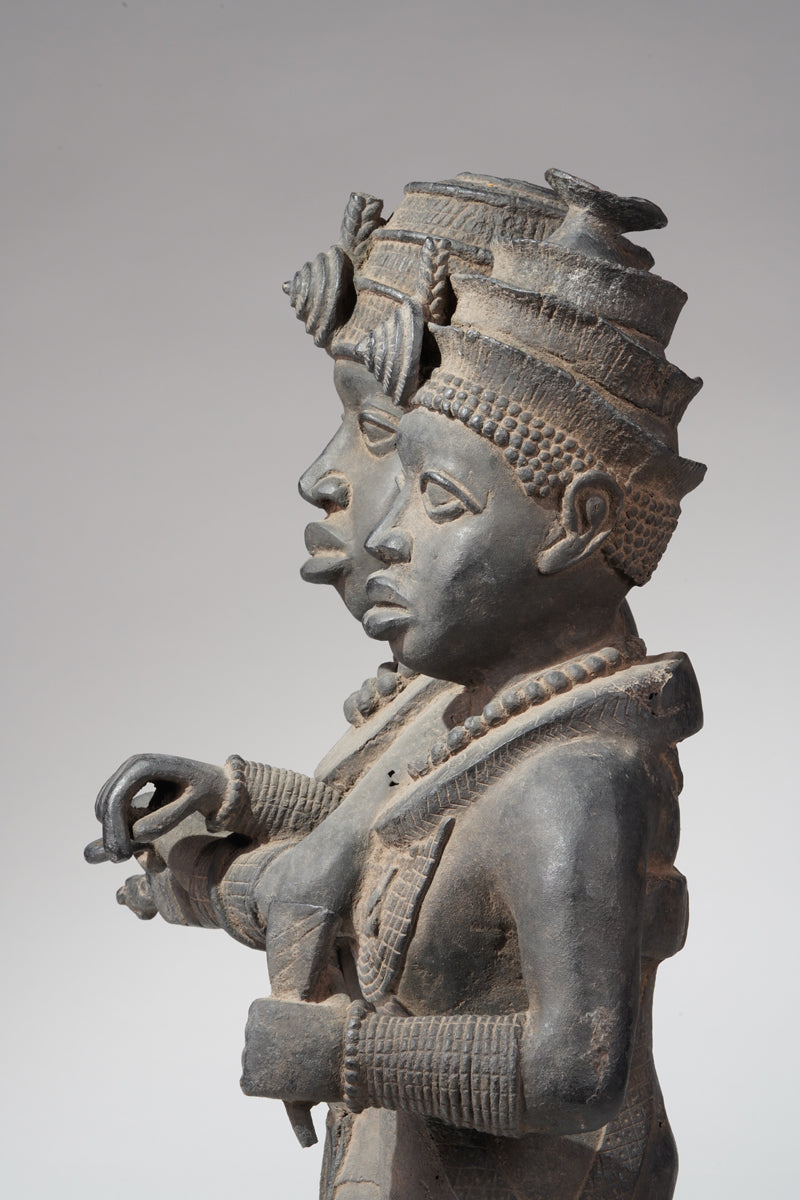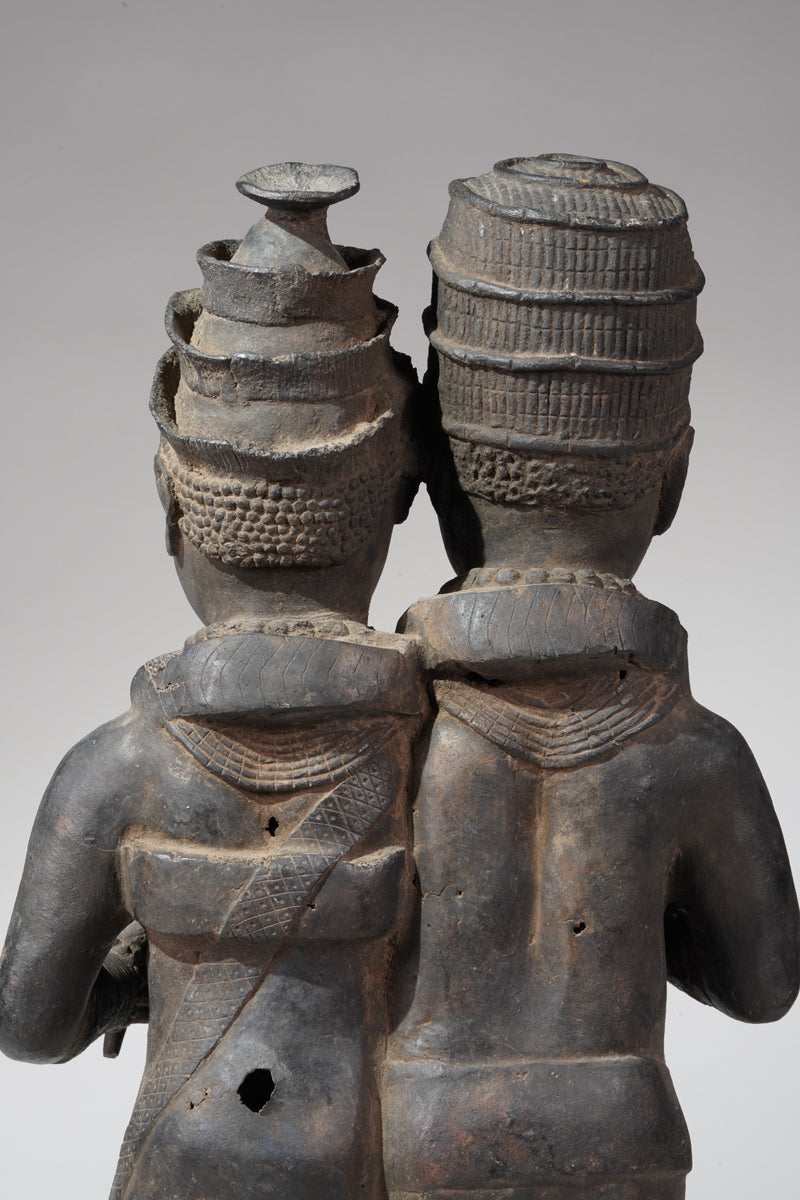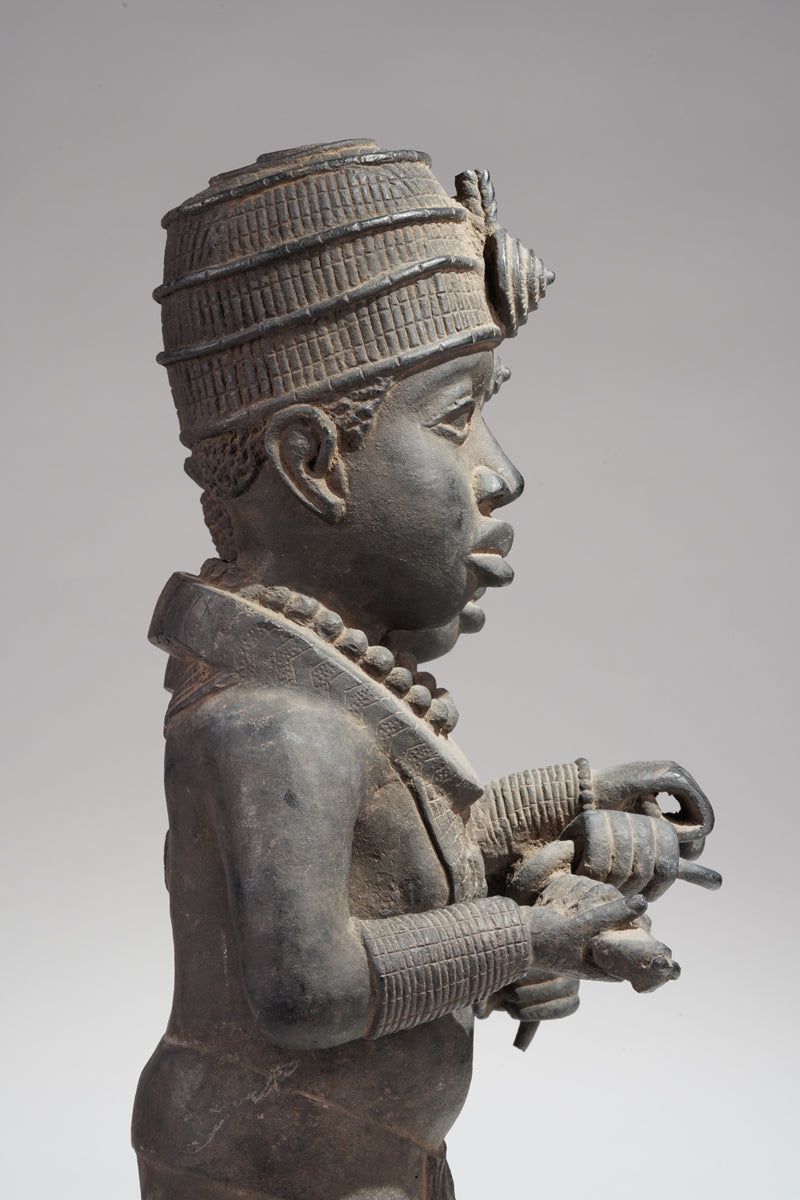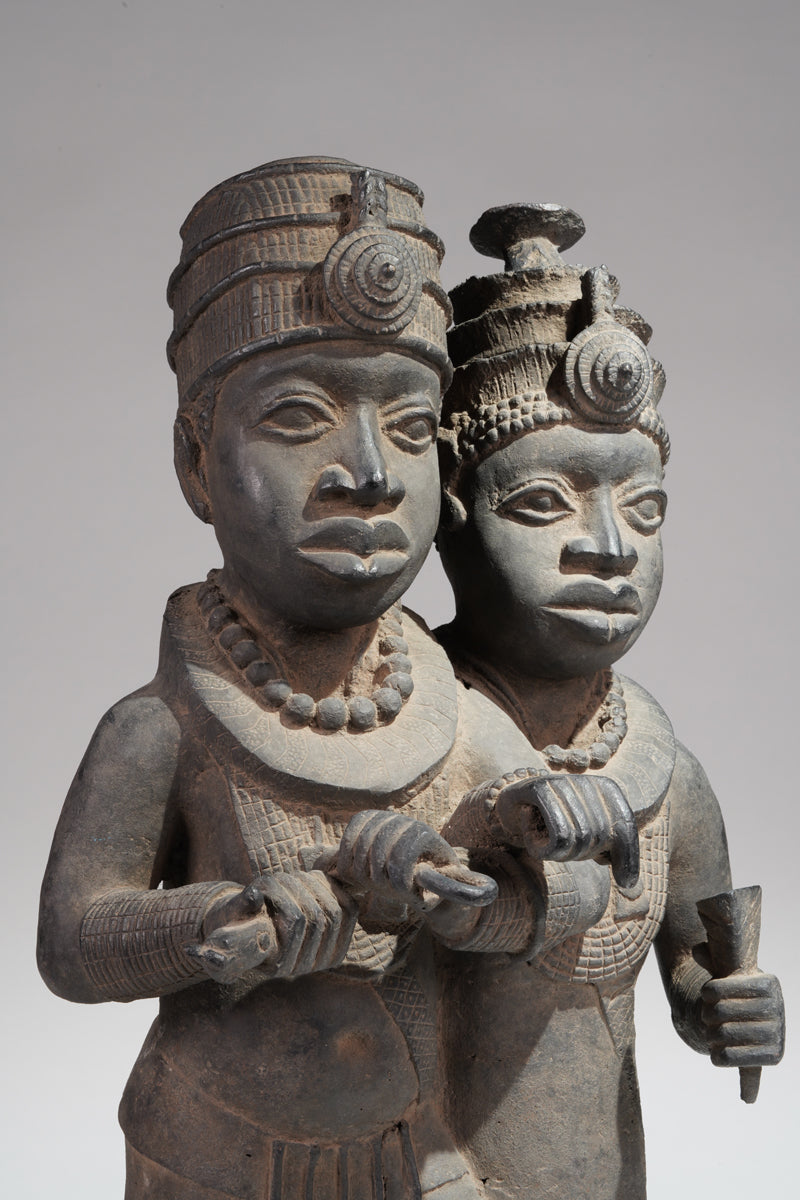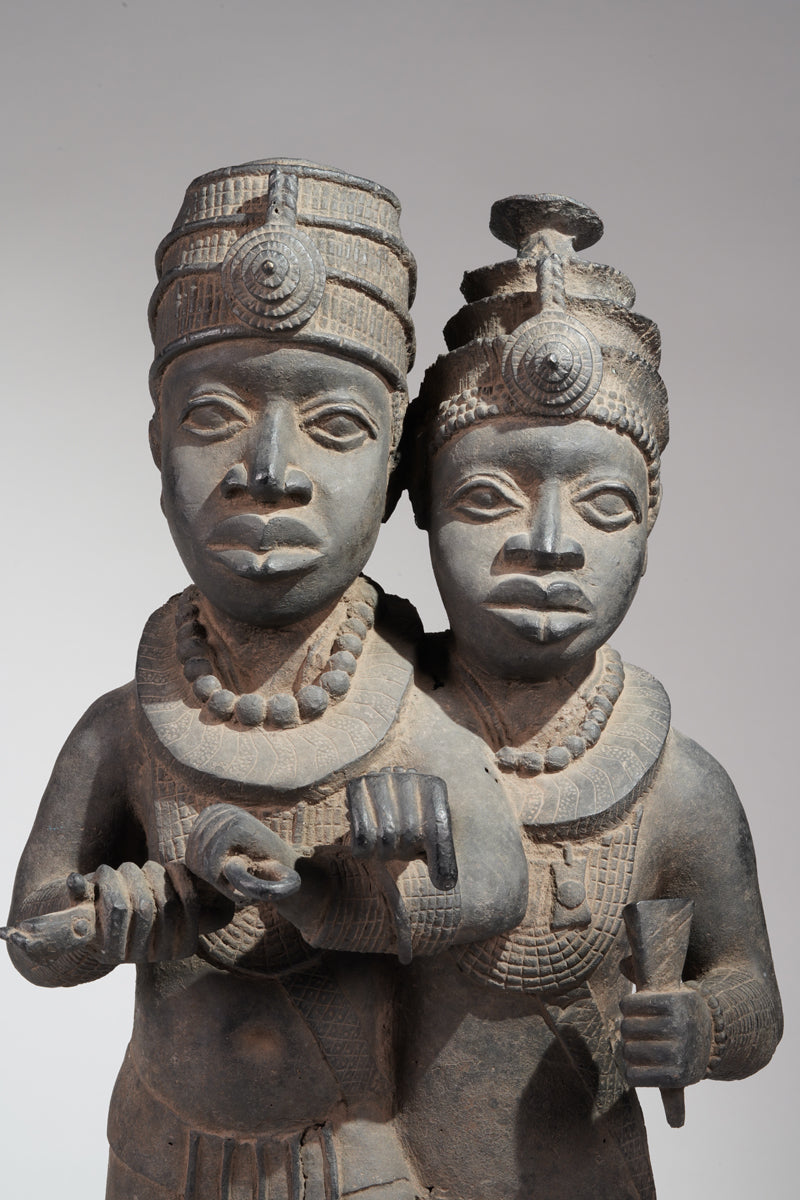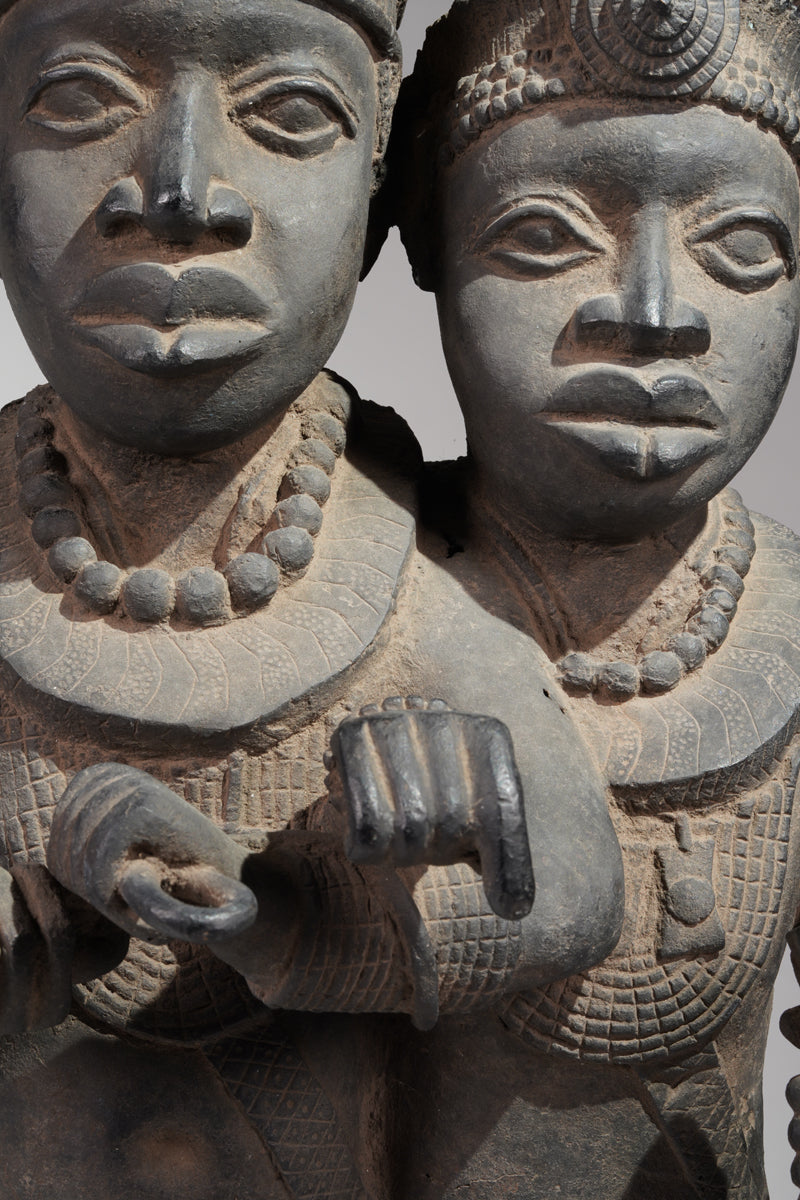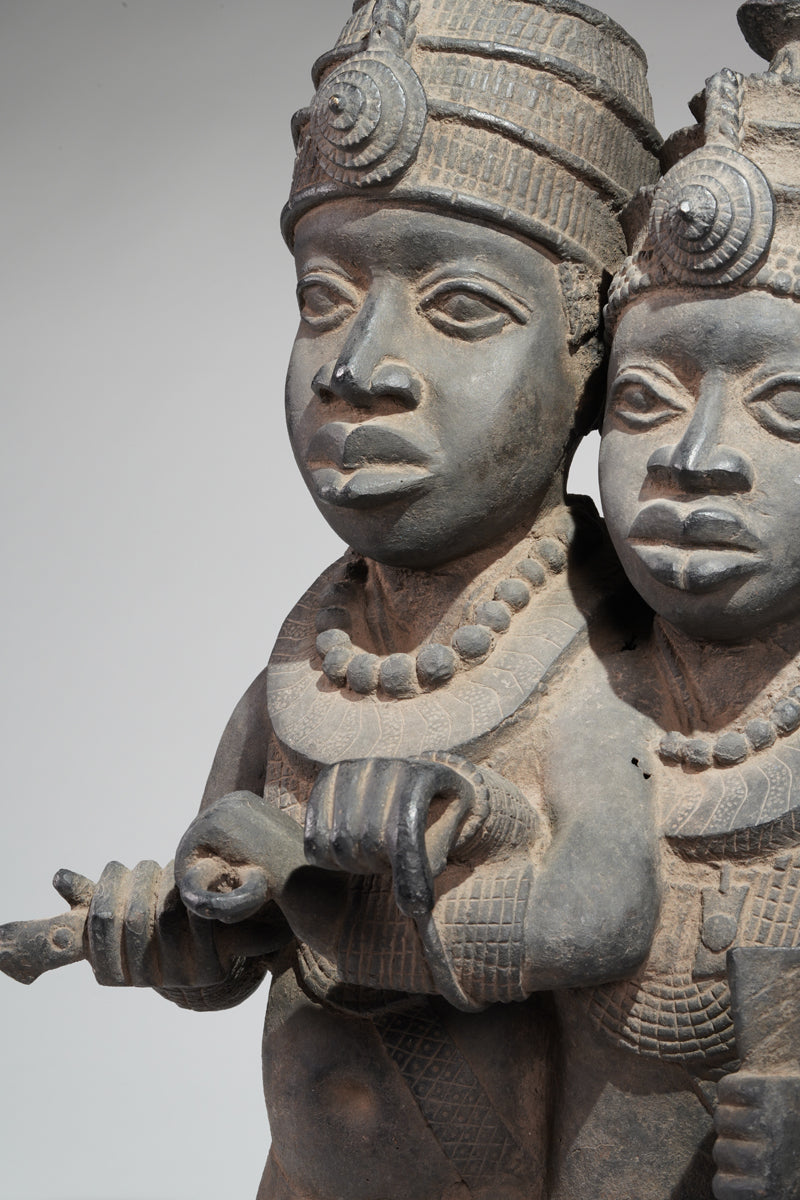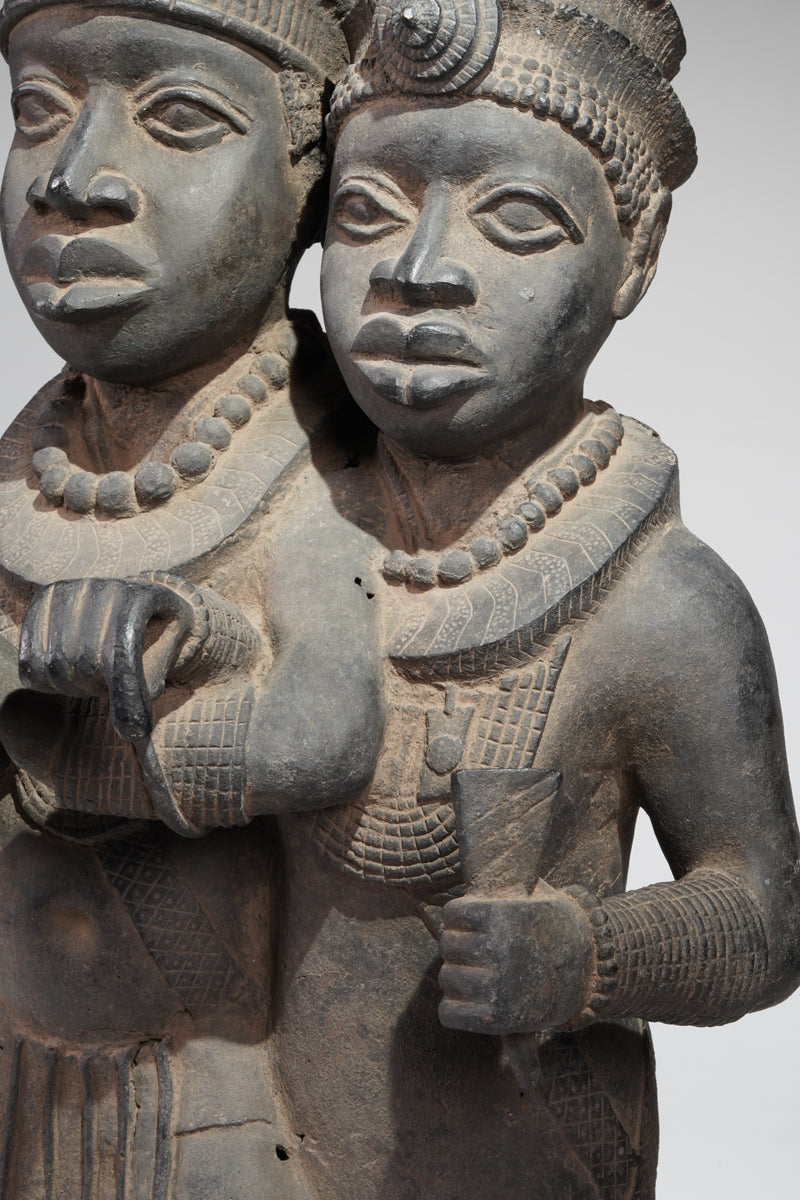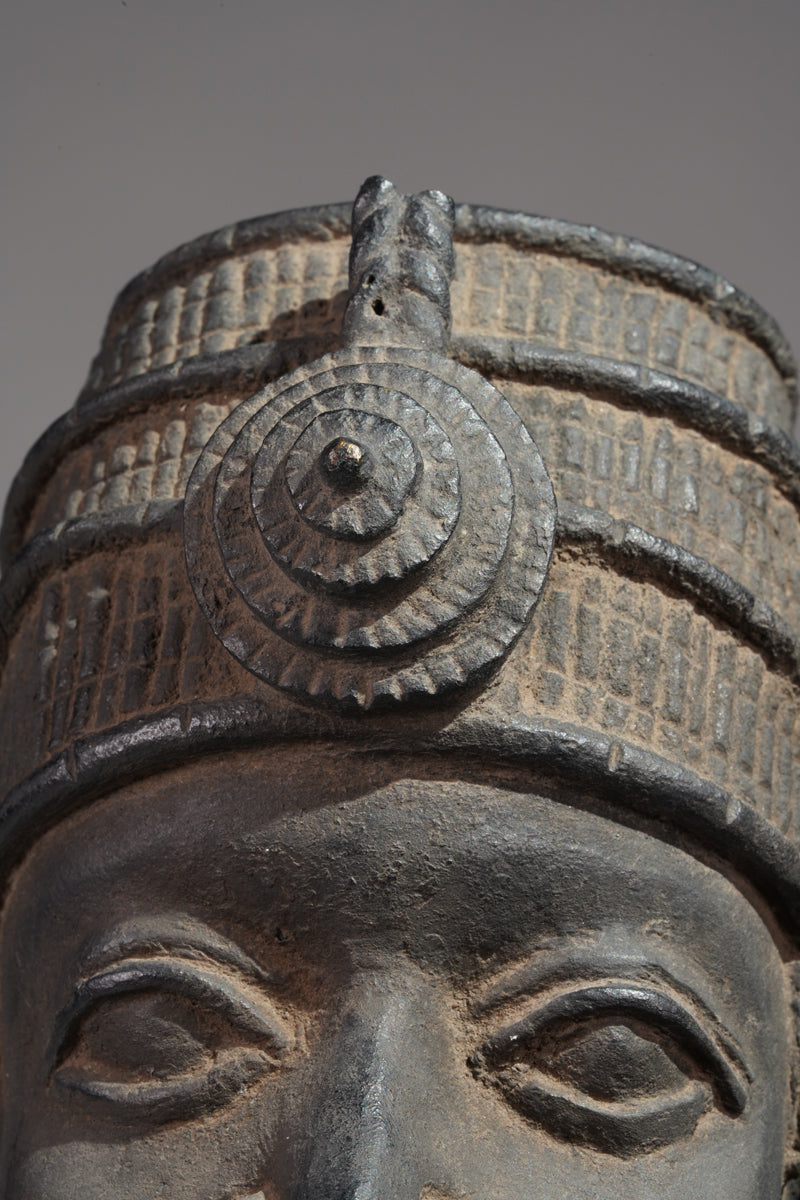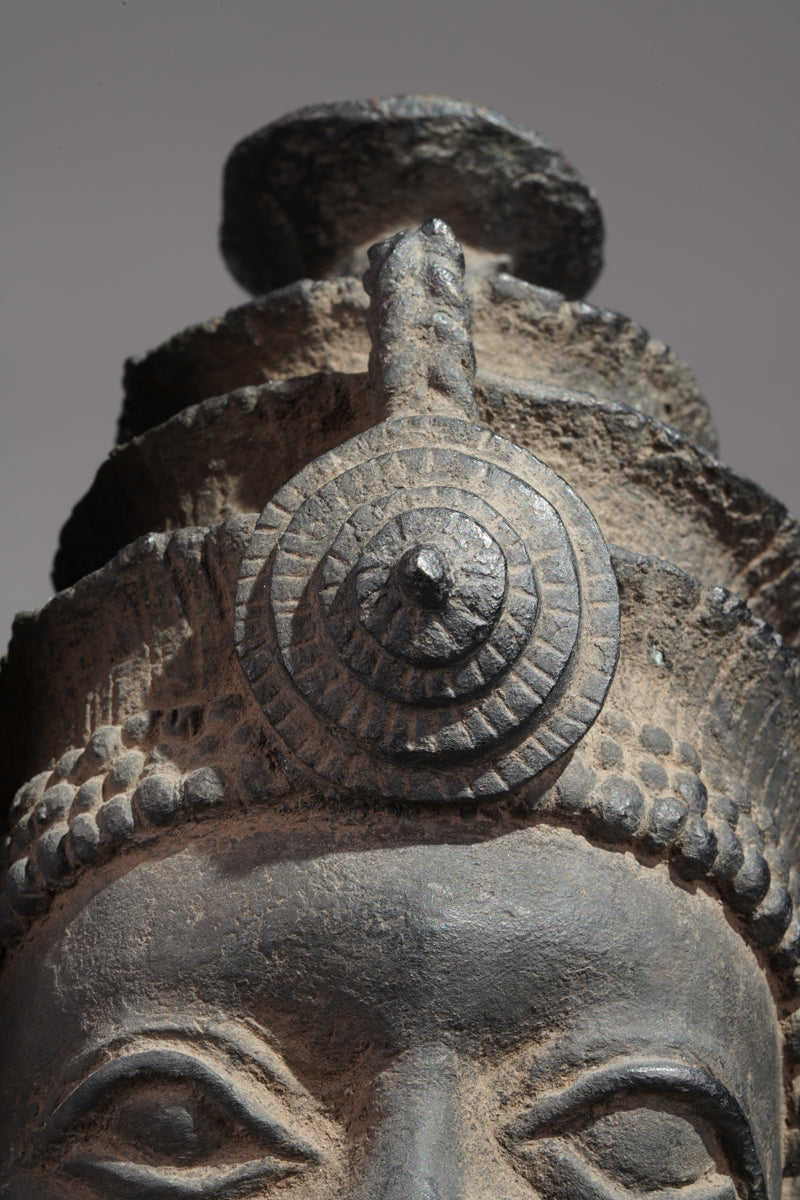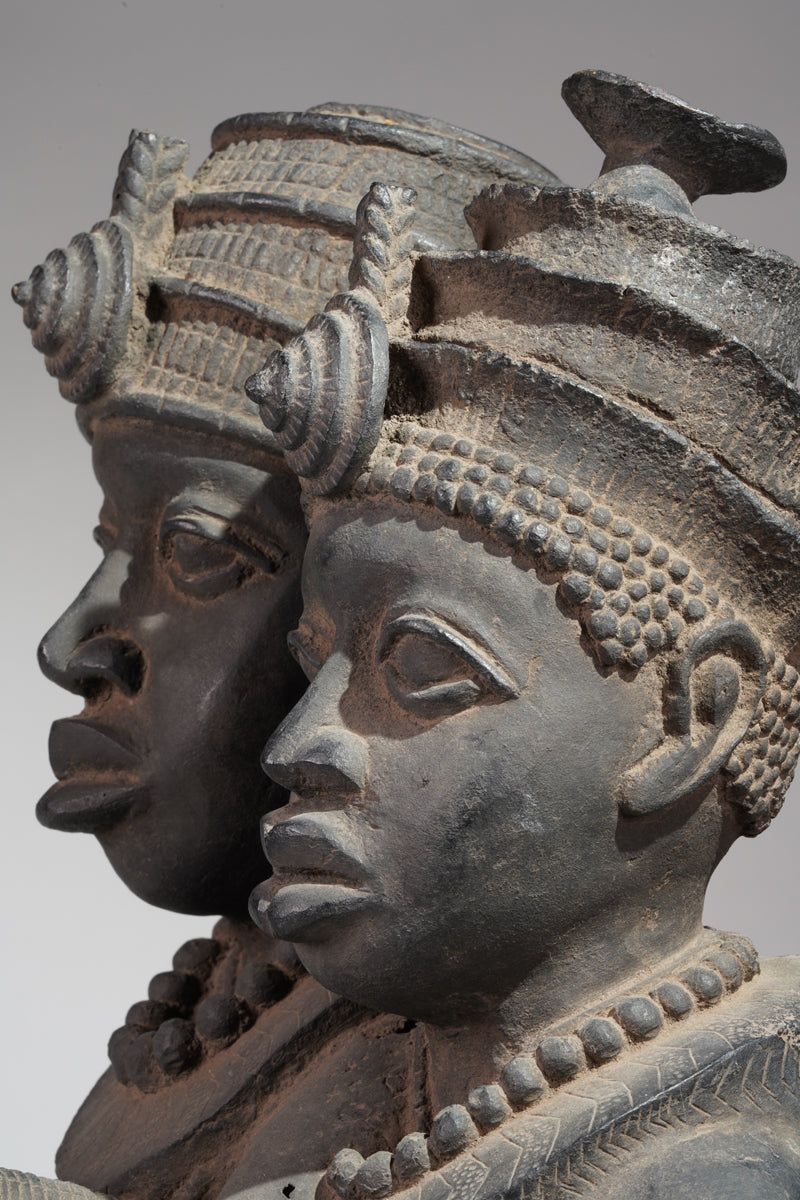wolfgang-jaenicke
A fragmentary Ife couple
A fragmentary Ife couple
Couldn't load pickup availability
A fragmentary Ife couple, one leg is missing.
Related exemplare, "Ife", Frank Willet, 1957, page 37, plate 10, with a fragmentary, similar exemplare, which was found in Ita Yemoo, 1957, backside, page 75, plate III, text on site 72,
This sculptural pair exemplifies the visual vocabulary of royal authority in Yoruba art.
The elaborate headgear identifies the male figure as the Ooni, spiritual and political leader of Ile Ife, and the female figure as the Queen Mother, a role of significant influence within Yoruba court systems. The Ooni holds a horn, a potent emblem of divine kingship, while the woman carries a stylized hand, a symbol of ritual power found throughout southern Nigerian cosmologies.
Although often interpreted as a married couple, comparative stylistic and iconographic analysis suggests a more institutional reading. Rather than emphasizing conjugal ties, the representation likely depicts the Ooni and the Queen Mother as complementary sources of authority. This interpretation is supported by the figures’ proportional equality, the symmetry in their garments, and the balanced distribution of regalia associated with rulership. Facial features mark gender distinctions, but both figures are rendered with equivalent visual weight, reinforcing the idea of parity rather than hierarchy.
A particularly distinctive motif found in the art of Ile Ife and Benin is the intertwining of limbs. While the linking of arms remains a familiar gesture of union, the interlacing of legs may appear unfamiliar to contemporary viewers. This pose does not signal physical intimacy but instead points to shared obligations and structural interdependence. The left leg of the Ooni wraps around the right leg of the female figure, symbolizing the indivisibility of their respective roles in sustaining the cosmic and political order.
Rather than a literal portrayal of kinship, the work encodes a complex worldview in which leadership is relational, gendered, and ritually balanced. The sculpture thus visualizes a system of dual sovereignty deeply embedded in Yoruba thought and practice.
In Benin art, the depiction of a son in relation to his mother often centers on the role of the Queen Mother, known as the Iyoba. The Iyoba held a prestigious position in the Kingdom of Benin, especially after her son ascended to the throne as Oba (king).
Artworks frequently honor the Iyoba for her role in giving birth to and supporting the Oba. While the son may not always be shown directly alongside the mother, his presence is implied through her elevated status and rich regalia. Bronze heads of the Iyoba, for example, portray her with elaborate coral bead headdresses and royal symbols, emphasizing her power and connection to the king.
In some plaques and carvings, smaller figures may represent the young Oba, attendants, or symbols of royal authority, reflecting the importance of the maternal bond in legitimizing kingship. The mother is not just a biological parent but a source of royal power, and Benin art uses visual language
"The question of fundamental dating - still one of the main questions of Benin research - Wolf approaches, however, always very carefully and with respect. He makes it clear that must remain open, whether his cognition actually" solid clues to the individual by no means completed dating of the Bronzes. "Sylvia Dolz, Treasures of Africa / Benin, the donation Baessler, Museum of Ethnology Dresden, 2006, page 13.
The cited Siegfried Wolf was a scientist and ethnologist, Sylvia Dolz argues according of this point of view that neither a natural sciences (especially TL and metallurgical analysis) nor an art-historical / stylistic method alone lead to useful results in terms of age determination. Only a combination of several reviews can lead to useful results. This is the prevailing opinion in science and literature, one might also call it the opinion of those who prevail. The future will show which opinion will prevail.
Non-binding TL analysis 310 years,+/- 24,3 %
Height: 53 cm
Weight: 15,9 kg
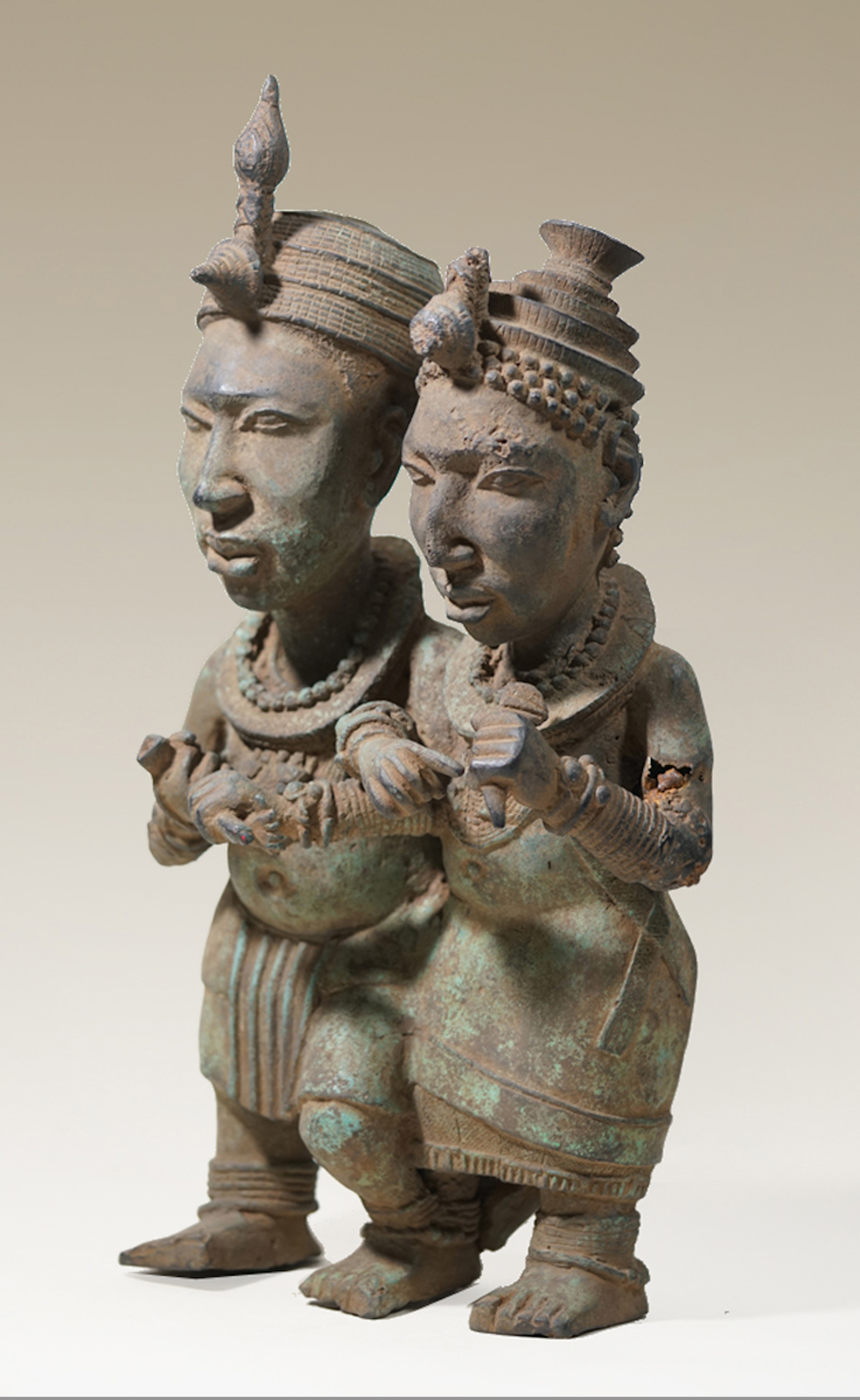
In the last 15 years we have sold two similar exemplares with different stylistic features, one on the Ife and Benin exhibition six years ago, obviously from the same artist. This exemplare was exhibited on our exhibition 2019.



















